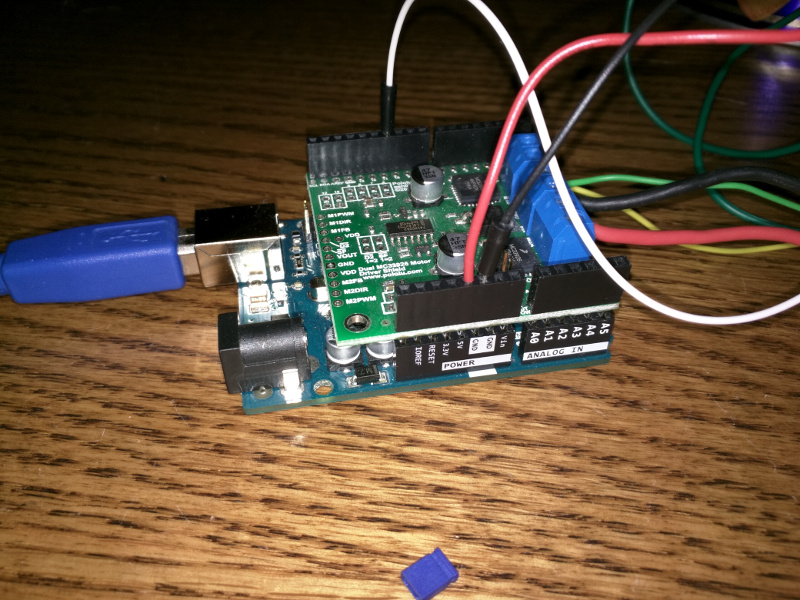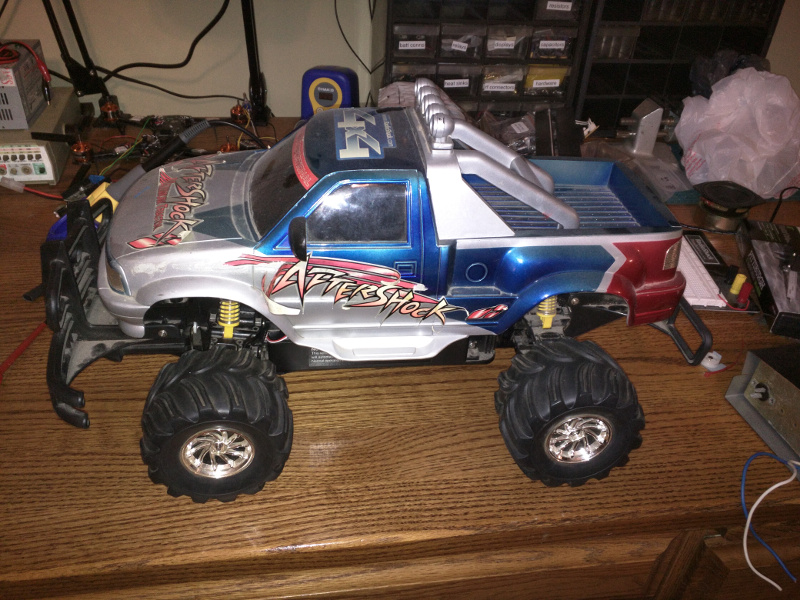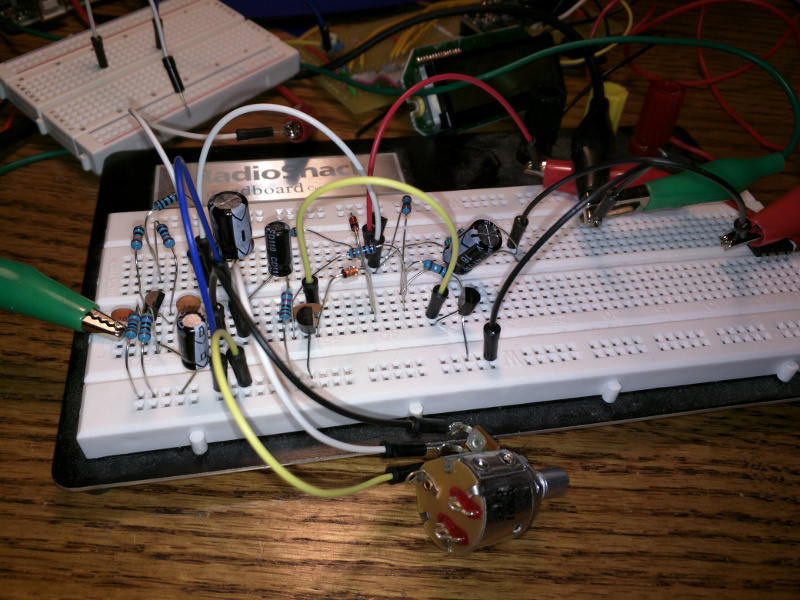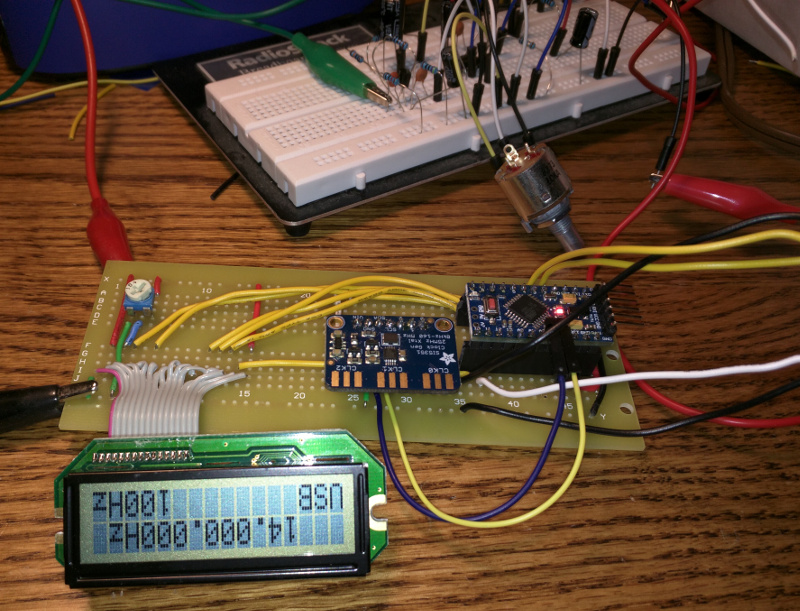In the last post, I replaced the steering servo with a standard hobby servo. Now I should be able to control the drive and steering with an arduino. For the drive motor controller, I am using a Pololu MC33926 motor shield with a 7.2v NiMH RC battery pack hooked straight to the shield. I plugged everything in, tweaked the example code from the DualMC33926MotorShield library and it worked like a charm.
I am currently waiting on parts from China to continue working on my radio receiver, so I thought I’d start working on a robotic rover. I’ve picked up several remote controlled cars from the thrift store and I have been meaning to turn one into some kind of autonomous vehicle that can roam around the yard. Here is what I am starting with. I think I paid $1 for this truck without the controller.
After I killed my homebrew upconverter, I went back to messing around with ads-b and dump1090.
The little antenna that came with the rtl-sdr dongle worked okay, but I wanted to build a better antenna to see if I could get more range. I looked online and found quite a few pages on coaxial collinear antennas and I had everything I needed to build one, so I figured I’d give it a shot.
For the next step of my homebrew direct conversion receiver is the audio amp. I used this schematic from N6QW’s Simpleceiver posts.
Here is the amp mocked up on a breadboard.
It worked, but not very well. There was a lot of noise and static. At this point, I thought about switching over to a LM386 based amp, but I went ahead and soldered it up on a piece of copper clad.
I rebuilt the si5351 vfo on perfboard. I went with an arduino pro mini with the adafruit si5351 breakout board and a 16×2 lcd screen I pulled out of an old printer. I’ll be using this vfo in a direct conversion receiver. You can see the start of the audio amp on the breadboard in the background.
In other news, I attempted to finish my upconverter. I built it out on a board and replaced the si5351 with a crystal oscillator and added a few filters and now it doesn’t work.
Over the weekend, I put together a few simple antennas and hung them in my attic. The first was a 20 meter dipole, the second was a planar disk antenna. 20 meter dipole For the dipole, I used 1/2 inch pvc pipe as the insulators and 14 gauge stranded THHN for the elements. First, I cut a few pieces of PVC and drilled holes to feed wire through.
For 20 meters, using the formula, Total Length = 486 / Desired Frequency, I ended up with 16.





